My first encounter with root-knot nematodes was many years ago in my Southern California garden. I harvested a crop of stunted carrots with weird bumps and split roots, which wasn’t too alarming since I had heavy, rocky soil.
Read more: These are the most common causes of poor carrot production
The next season, I planted Swiss chard in the same bed and the plants seemed rather lackluster compared to the chard in my other beds. Did they need more nitrogen? More water? Less water?
When I pulled up all the plants a few months later, the problem was clear: I had root-knot nematodes in the soil.
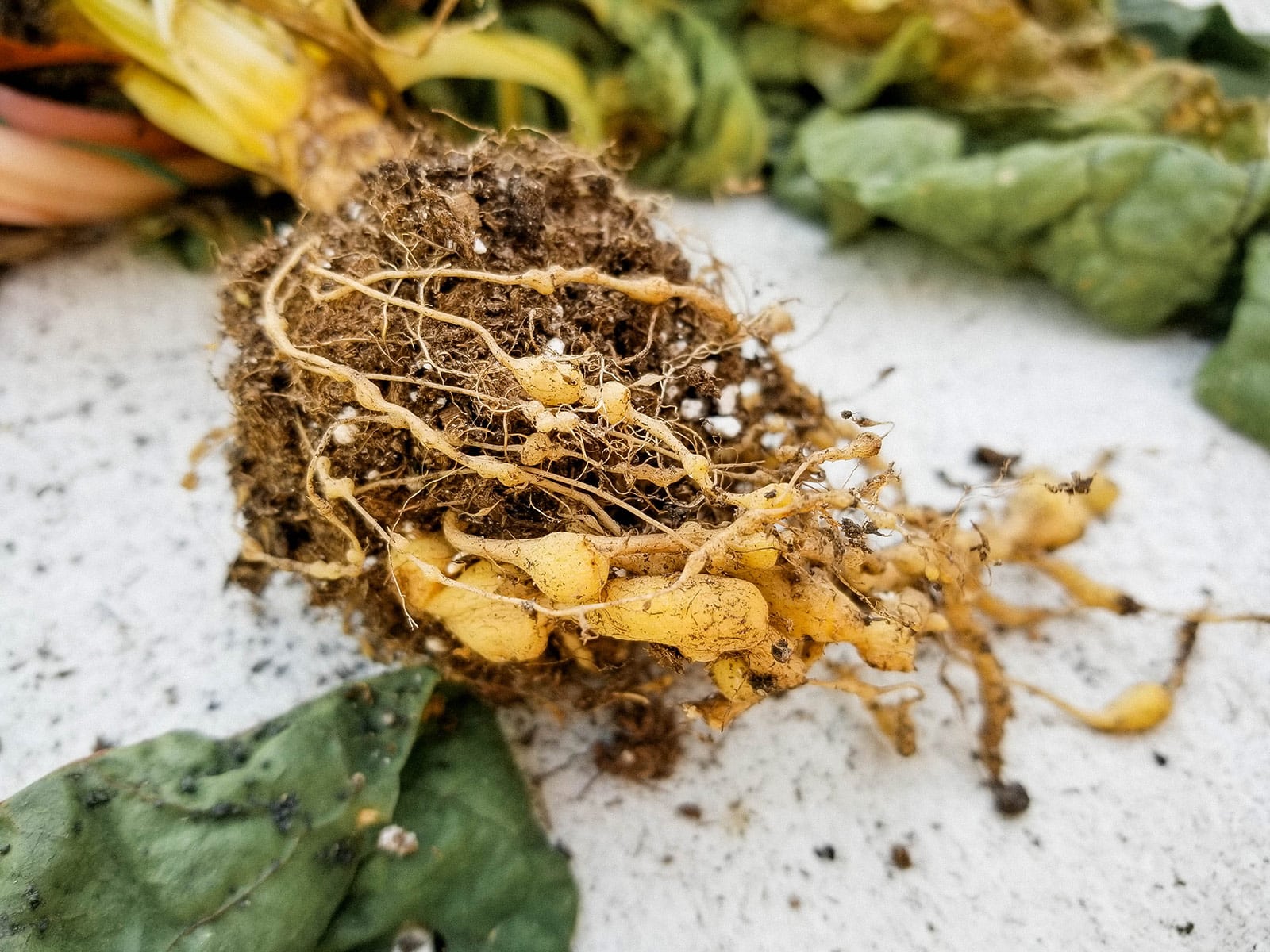
Disclosure: If you shop from my article or make a purchase through one of my links, I may receive commissions on some of the products I recommend.
What are all those bumps on the roots?
Root-knot nematodes (Meloidogyne spp.) are microscopic roundworms that live in the soil and parasitize plant roots. As they grow, they feed on the roots, damaging them and creating weak points for other soilborne pathogens (like Fusarium and Verticillium) to enter.
The roots swell up and develop a characteristic “knotted” appearance (known as root galls) that make it difficult for plants to take up water and nutrients. The root mass may be abnormally shallow with lots of dead areas or excessive branching.
In root crops (like carrots), root-knot nematodes cause forking and twisting of the roots and a sort of hairy appearance.
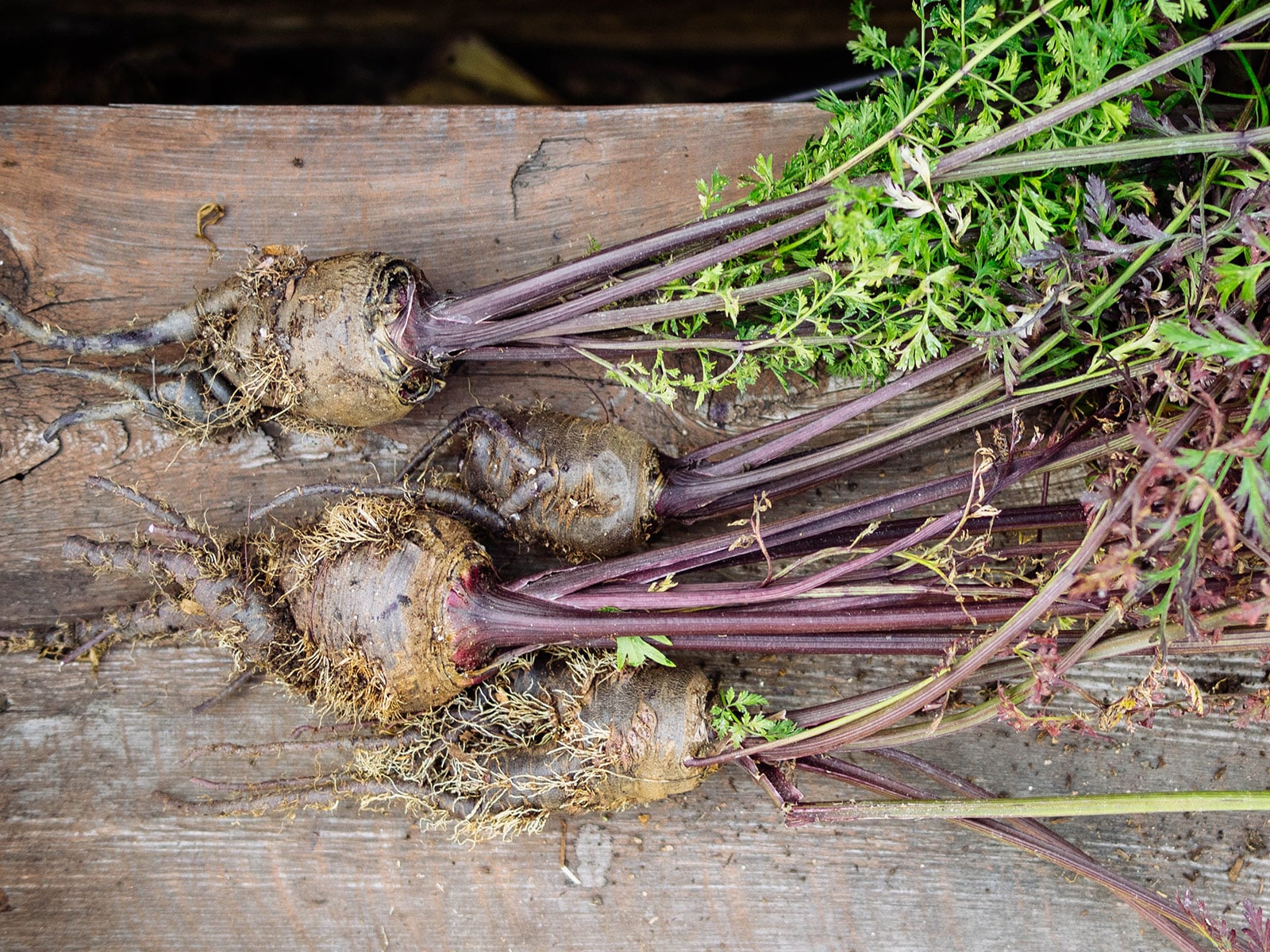
In other vegetables (like chard, tomatoes, squash, and a host of other susceptible crops), they’re seen as a series of small, round, hard bumps on the roots. (These bumps are not to be confused with the root nodules formed by beneficial fungi called rhizobia. Rhizobia are good, root-knot nematodes are bad.)

You often don’t realize they’re there until it’s too late, because all the evidence is below ground but above ground, the symptoms are rather ambiguous. Slow or stunted growth, wilted leaves, and poor production of flowers and fruits can be attributed to many other soil and plant problems.
So what to do if you’ve got root-knot nematodes? First, don’t ignore them—they will only continue to multiply and be incredibly hard to eradicate from the soil.
Your plan of action should start with knowing what types of plants they tend to target—and not planting those (at least for a while).
Avoid susceptible crops
Root-knot nematodes definitely have a preference for certain crops more than others. Even in the same bed, there may be heavily infected plants growing just a few feet away from others that are virtually untouched.
Avoid growing these vegetables in nematode-infested soil, as they’re generally more susceptible to root damage:
- Chard
- Beets
- Carrots
- Tomatoes
- Peppers
- Cucumbers
- Summer squash
- Winter squash
Dispose of all infected plants
If you find nematode-damaged plants, be sure to pull up the entire plant—including all of the roots—and dispose of the plant debris. (I say “plant debris” because the harvest is usually still edible, even if it’s a bit unsightly.)
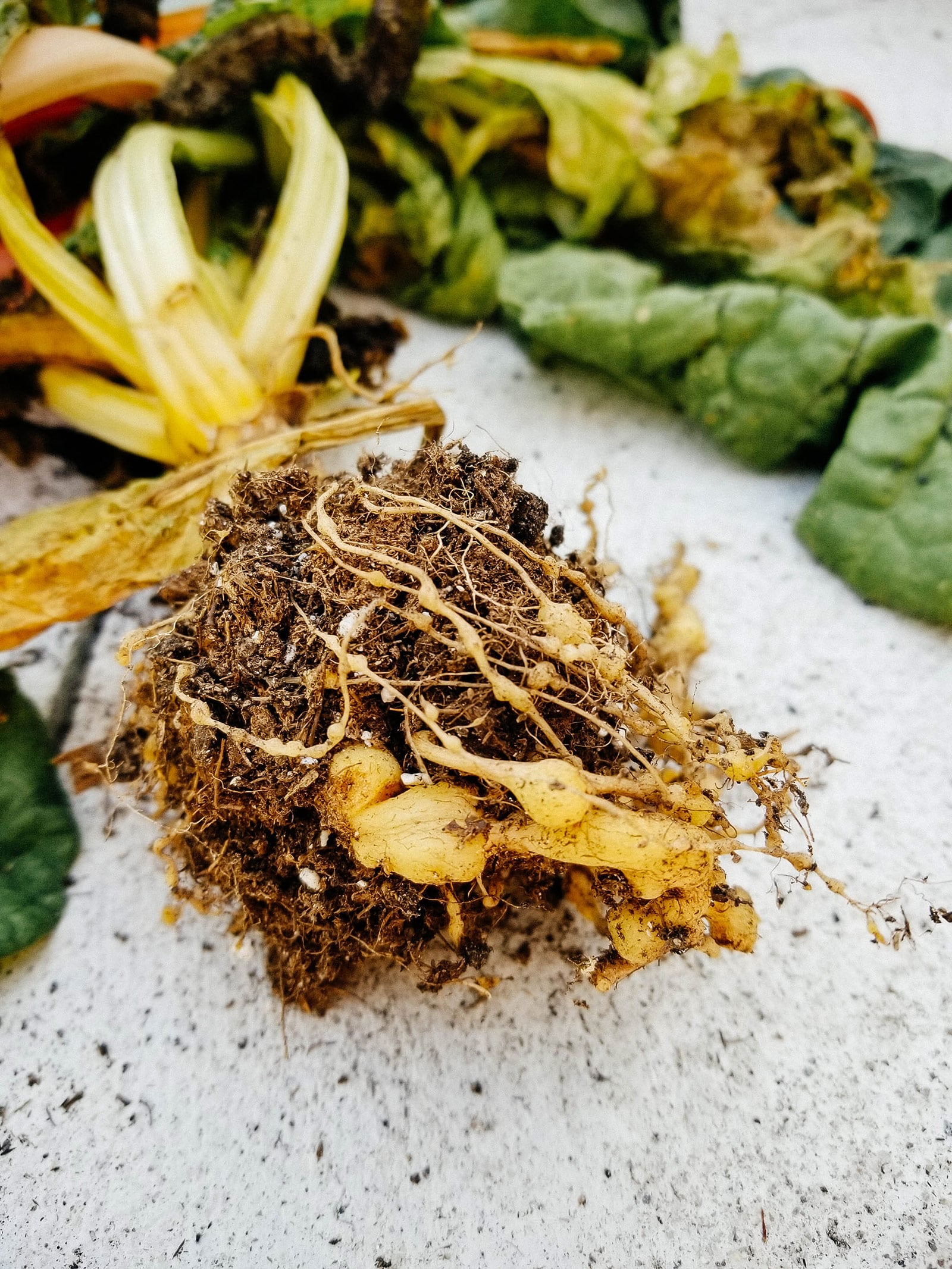
If the plant dies (or is pulled from the soil), then the nematodes die with it since they’re incapable of movement once they start feeding. (Don’t get too excited though, because there will still be eggs in the soil that can hatch.)
Don’t compost the affected plants or plant parts, or temporarily stash them somewhere else in the garden while you tend to other garden chores. (You don’t want to inadvertently spread them to other beds!) Just chuck them right in the trash.
Avoid moving infested soil
If you have a bed with nematode-infested soil, avoid moving that soil into other parts of your garden. Sometimes this happens unintentionally if you decide to move a seedling or start and replant it in another bed, for example.
Rotate crops on a three-year cycle
Do you practice crop rotation in your edible garden? No? Then it’s a good time to start.
Rotating your crops on a three-year cycle gives beneficial soil microbes different food sources, leading to healthier soil all around.
I keep crop rotation simple with this method:
- Group my main crops by family (for example, nightshades, alliums, legumes, and brassicas).
- Move each family one bed over in the garden the following year.
- Rinse and repeat.
Get better organized
Track where all your crops have been planted
If you have a hard time remembering where you’ve planted things, my Ultimate Garden Diary can help you keep track of crop rotation schedules and more.
This isn’t a hard and fast rule, however, since I do like to interplant and succession sow my crops. I often grow parsley and cilantro in various beds for their flowers, or stick a few random seeds in empty spots where I’d just retired old plants.
But as long as you’re not growing one type of plant in the same bed year after year, you’ll start to reduce root-knot nematode populations in the soil. It’s a slow process if this is all you do, but moving your plants around helps keep other pests and diseases in check too.
I recommend combining crop rotation with my next tip below.
Grow things they don’t love
Root-knot nematodes don’t attack all plants. In fact, there are plenty they don’t love, so growing plants that aren’t hosts to these pests will essentially starve them (and eventually eliminate them).
- Strawberries
- Rhubarb
- Corn
- Onions
- Asparagus
- Jerusalem artichokes
- Horseradish
- Globe artichokes
You’ll notice that most of these plants (depending on your climate) are perennials. If you have a problem with nematodes, consider turning the area into a year-round food garden with other perennial vegetables and perennial herbs.
Otherwise, you can rotate these plants through your infected beds and successfully wipe out root-knot nematodes after a few years. Just remember to stay on top of weeds that might become hosts to nematodes!
Try biofumigation
This sounds a lot more intense than it actually is. Biofumigation is a method of soilborne pest control used in agriculture, where the chemical substance (the fumigant) is naturally released by decomposing plant materials.
Brassicas are often used in biofumigation. These include Brassica oleraceae (cabbage, broccoli, cauliflower, kale, collards), Brassica juncea (Chinese mustard, Japanese giant red mustard, Korean red and green mustard, mizuna), Raphanus sativus (radish), and Eruca sativa (arugula).

They produce large amounts of glucosinolate, which break down into volatile gaseous compounds called isothiocyanates as the plants decompose. Research has shown that isothiocyanates are able to suppress or kill root-knot nematodes, making them a less toxic alternative to synthetic fumigants.
The key to successful biofumigation is growing the brassicas as a cover crop and then working them into the soil about two to three weeks before you want to plant your main crop.
While you can generally use any seed variety, you’ll get rid of root-knot nematodes faster if you grow a brassica that’s specially developed for biofumigation with higher levels of glucosinolates.
What to buy
Grow marigolds in infected beds
Open-pollinated French marigolds (Tagetes patula) are another biofumigant commonly grown for nematode control. The plants exude a substance called alpha-terthienyl that suppresses root-knot nematodes and inhibits egg hatching.
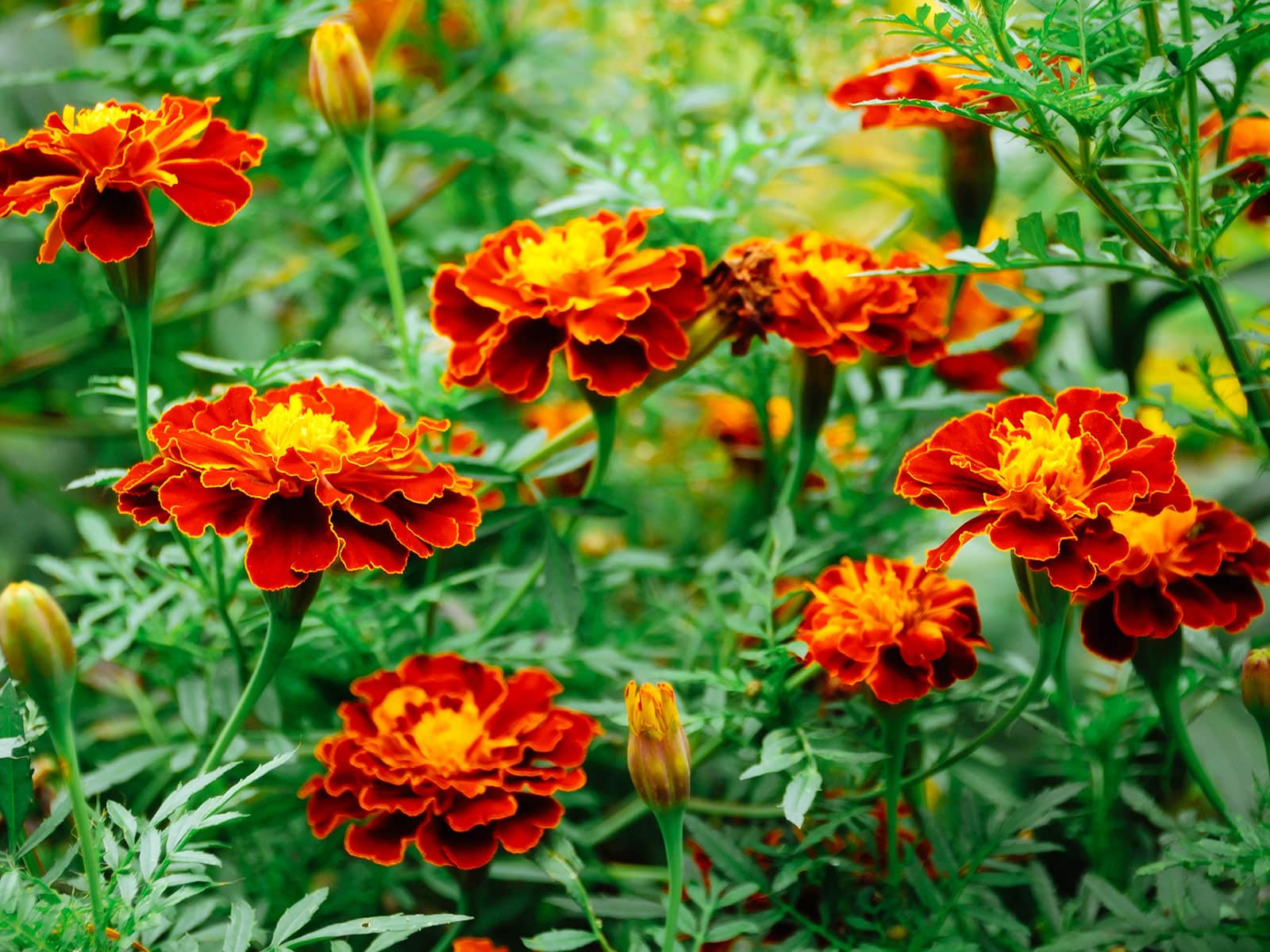
For maximum efficacy, you have to devote the entire infected bed to growing French marigolds en masse (rather than interplanting marigolds with other crops). Treat the marigolds as a cover crop and work them into the soil to release their biofumigant compounds.
What to buy
Grow root knot nematode-resistant varieties
Many vegetable varieties are resistant to root-knot nematodes. They’re either affected less by the disease, or the disease develops slower or later than in other varieties, giving you time to harvest a decent crop.
Look in your favorite seed catalogs for varieties that bear the acronym N (for “Nematodes”) or VFN (“Resistant to Verticillium Wilt, Fusarium, and Nematodes”).
Related: Here’s a list of other common seed terminology you might come across
If you’re buying starts or transplants, some common nematode-resistant varieties I’ve seen in garden centers (and seed catalogs) include:
- Kentucky Wonder and Contender snap beans
- Sweet Million cherry tomatoes
- Better Boy, Bush Early Girl, Early Girl, Bush Goliath, Goliath, Celebrity, and Lemon Boy slicing tomatoes
Boost the number of beneficial microbes in your soil
Typically when your soil is overrun with pests, it means something is out of balance. There aren’t enough good bugs to balance the bad bugs, and the best way to add more beneficial microbes to your soil is with compost.
This can look like a lot of things: a cover crop that’s chopped and dropped, a top dressing of aged compost added every year, an organic mulch that’s left to decompose, or soil building through trench composting and composting in place.
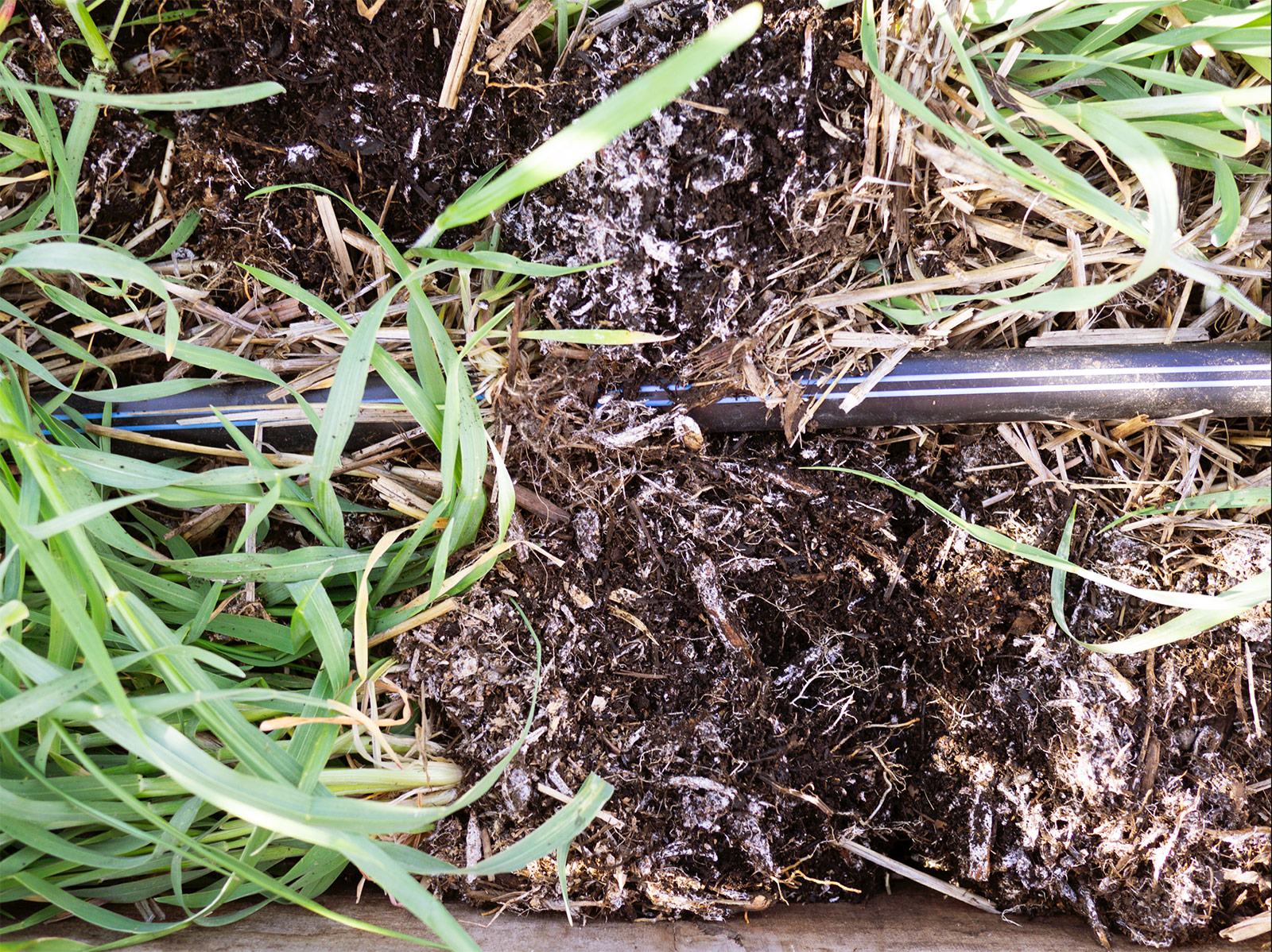

All of this provides the food and energy that mycorrhizal fungi and beneficial bacteria need to grow, and keeping your soil active and abundant with good microbes will help on many fronts.
Fight bad nematodes with beneficial nematodes
Nematodes aren’t all bad—there are actually good ones out there that don’t parasitize plants, and instead feed on fungi, bacteria, soil-dwelling insects, and even other nematodes.
Beneficial nematodes work by reducing the number of root-knot nematode eggs that hatch and inhibit the hatchlings from infecting plant roots. They’re easy to purchase (often arriving in powder or granular form) and easy to introduce into a garden (as a soil drench or spray).
What to buy
When all else fails, solarize your soil
Ultimately, this is what I did in my own garden to kill root-knot nematodes. I was going to be out of town for a good part of summer, so I was okay with leaving my beds fallow while the plastic sheeting worked its magic.
I wrote a step-by-step guide to soil solarization here, and I think it’s the most effective, inexpensive, and (relatively) hands-off method for getting rid of root-knot nematodes (as well as other pests and even weeds). Plus, it doesn’t involve chemical treatments so you don’t have to worry about using it around kids, pets, or wildlife.
The downside is that it does take several weeks to effectively “cook” the soil under plastic, but once it heats up and holds steady at the right temperature, you end up with fresh, clean soil free of pests and diseases, including those dreaded root-knot nematodes.


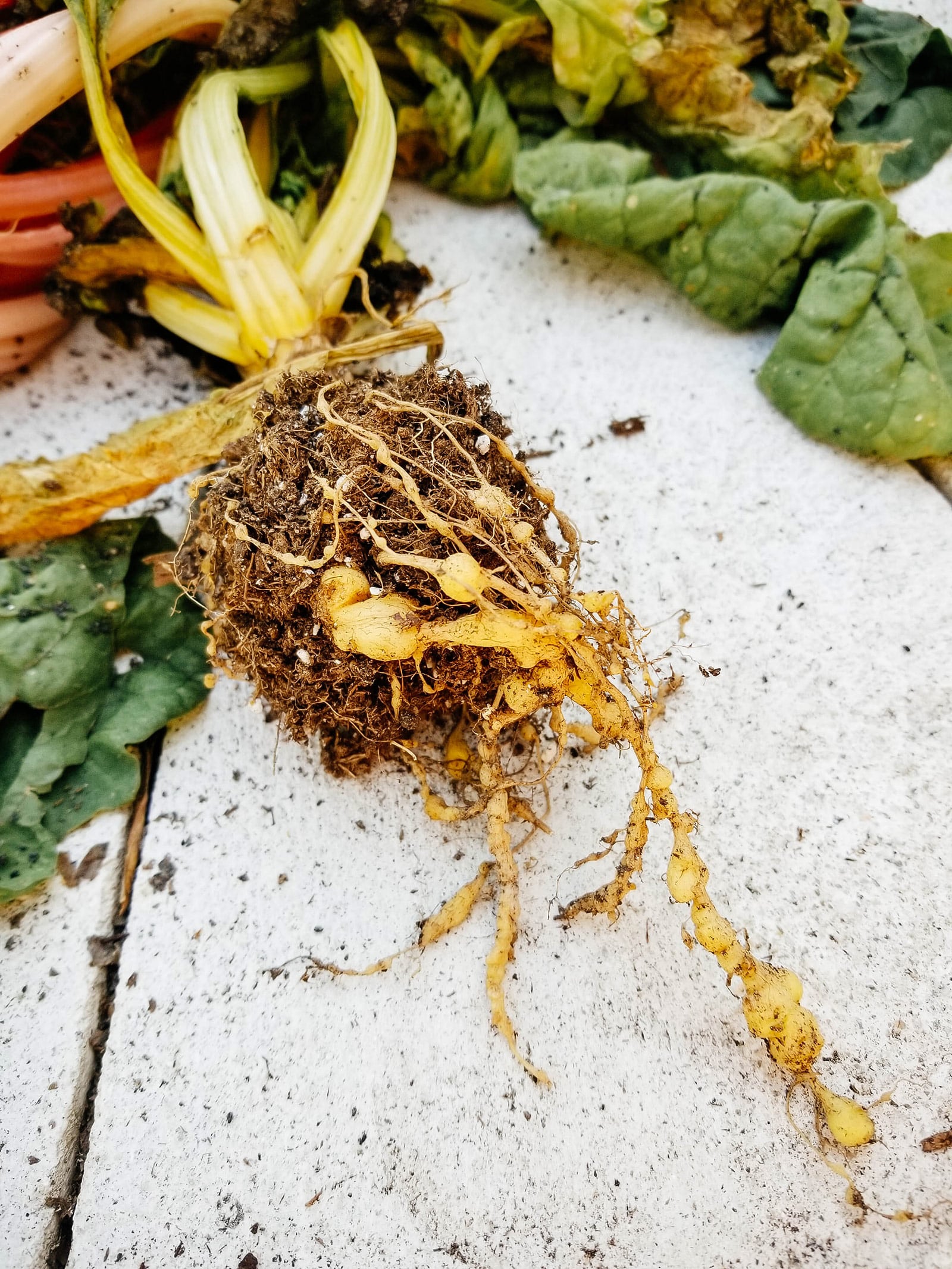













Crab & Lobster Shell work great for this. Because it’s high in Chitin, it builds Chitin eating bacteria in the soil. Root Knot Nematodes are Chitin based is structure, so they get eaten by the Chitin eating bacteria!